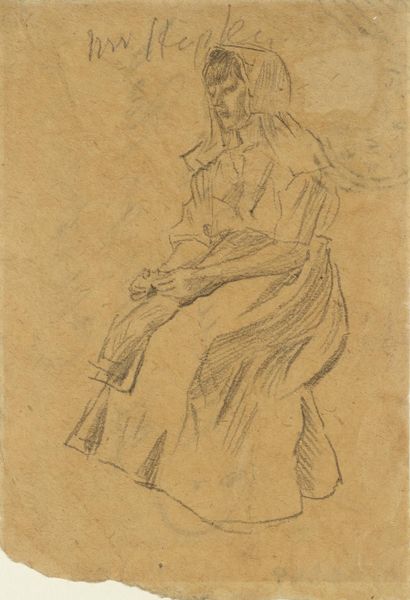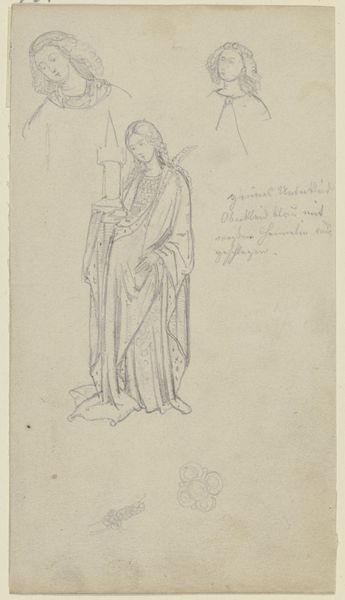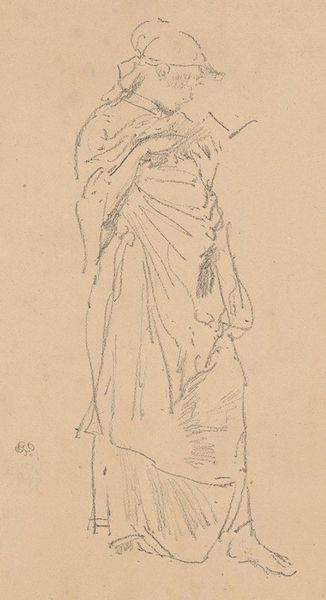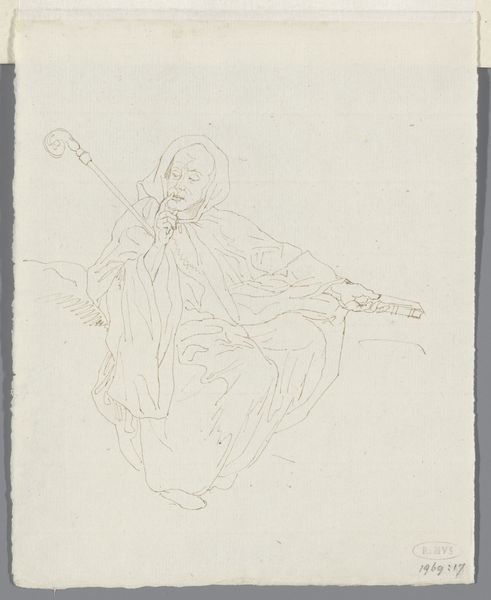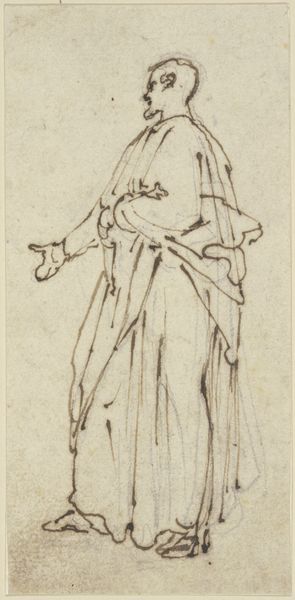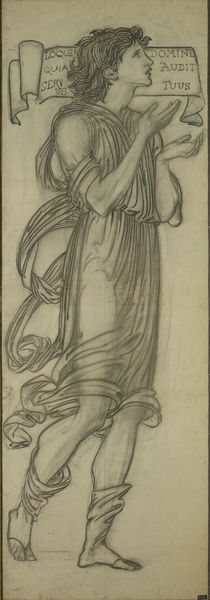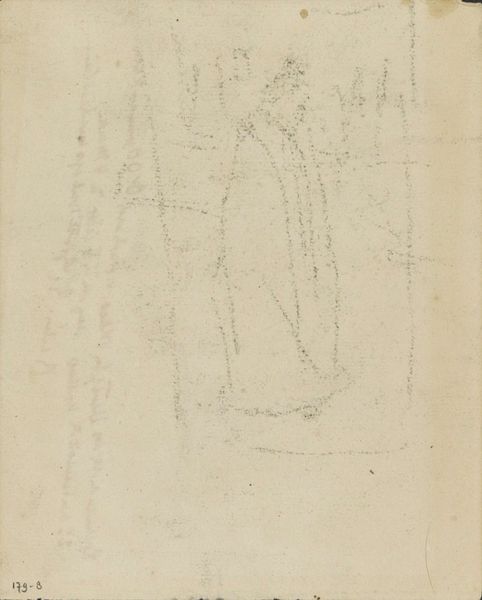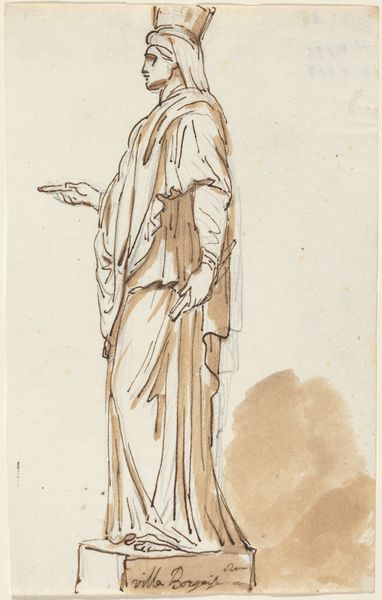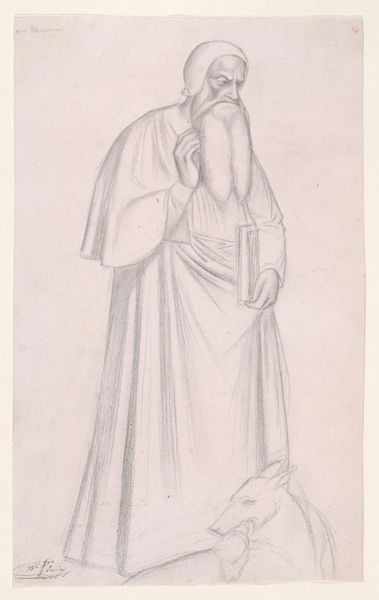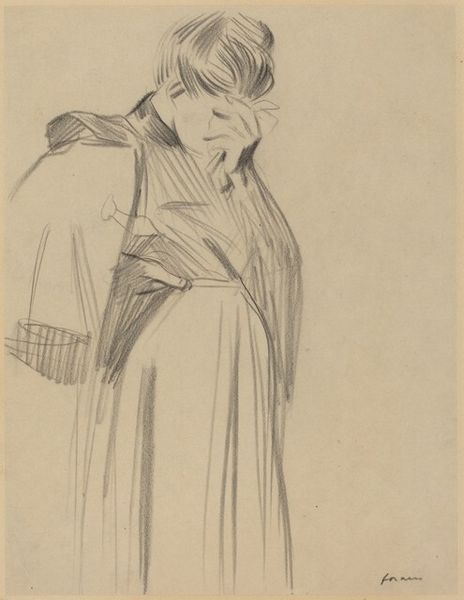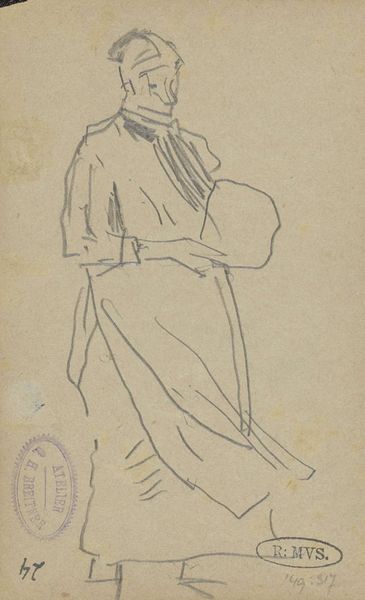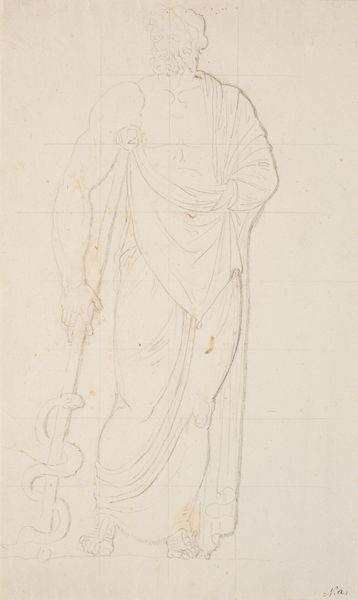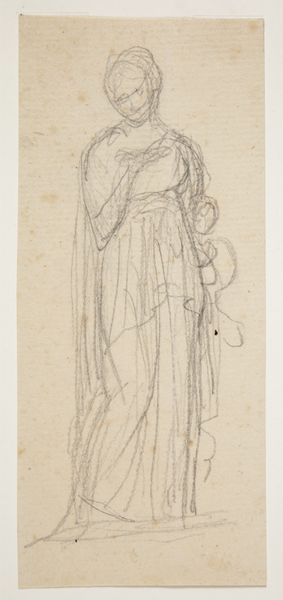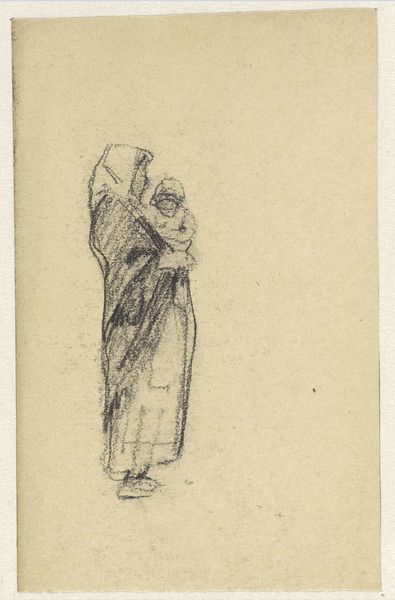
drawing, paper, pencil
#
portrait
#
drawing
#
toned paper
#
light pencil work
#
old engraving style
#
figuration
#
paper
#
personal sketchbook
#
idea generation sketch
#
ink drawing experimentation
#
pencil
#
ink colored
#
sketchbook drawing
#
academic-art
#
sketchbook art
#
initial sketch
Dimensions: height 89 mm, width 77 mm
Copyright: Rijks Museum: Open Domain
Curator: This is "Vrouwelijk heilige met gevouwen handen," or "Female Saint with Folded Hands," a pencil drawing by Henri Cameré, dating roughly between 1864 and 1894. It’s rendered on toned paper. Editor: There’s a striking sense of quietude. The light pencil work and toned paper give it an ethereal, almost fragile quality. It feels intimate, like a glimpse into a private moment of devotion. Curator: Absolutely. Consider the context: mid-19th century, a period grappling with industrialization and its discontents. We can imagine the artist seeking refuge in traditional iconography, in the figure of a female saint who probably embodied compassion and spiritual solace. Who was afforded solace in those years, and who wasn't? Editor: And this drawing, it's clearly a study. Note the light pencil work. It almost suggests this isn’t meant as a finished product, but rather as an act of contemplation or exploration. What were the economic realities of an artist like Cameré? Was this sketch for private enjoyment or meant for something bigger? Curator: We see similar considerations in the art being produced in ateliers, where a division of labor was increasingly becoming normalized. Drawings such as this may have been made by the artist in order to train, so he could more effectively lead workshops and fulfill larger commissions. It could serve multiple functions, which only highlights the resourcefulness and precarity of artists then and now. Editor: Precisely, it challenges this idea of high art as divorced from labor. The means of production, the accessibility of materials like pencil and paper… all influenced the kinds of images created and who could create them. This was before photography made widespread art ownership attainable to most people. Curator: I agree, that emphasis on context helps us resist idealizing the past, doesn't it? It invites us to question power structures inherent in art history and connect them to contemporary issues. Editor: Yes, and in closing, perhaps the beauty of this unassuming sketch lies not just in its technical skill but also in its capacity to spark reflection about faith, labor, and the conditions under which art comes into being.
Comments
No comments
Be the first to comment and join the conversation on the ultimate creative platform.
